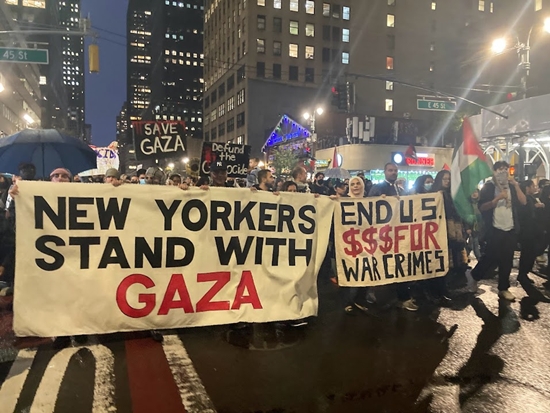The New York City Democrat mayoral primary on June 24 ended with Zohran Mamdani, a so-called Democratic Socialist, effectively becoming the party’s standard-bearer in the Nov. 4 mayoral election. Many are rightly troubled by this unfortunate circumstance.
After all, whether it’s his defense of the slogan “Globalize the intifada”; anti-Zionism as a euphemism for antisemitism; failure to condemn the Hamas-led terrorist attacks in Israel on Oct. 7, 2023, and instead criticizing Israel on Oct. 8; invocation of a “genocide” blood libel of Israel; supporting BDS; calling to defund the New York City Police Department; or his embrace of Marxist policies, Mamdani’s brand is toxic to the majority of Jewish and other Americans.
The Democratic Party machinery in New York City seems to have been hijacked by the Democratic Socialists of America. This was no mean feat. The DSA has organized young volunteers who they keep involved with the group even when not working on elections. Recruitment lures include far-left politics and ideology, and most recently, melding with anti-Israel and antisemitic radical Islamists of all stripes.
This cult-like approach to continuing engagement is unlike the methodology employed by other political parties. Indeed, candidates for office are often chosen from among active DSA members. They are viewed as being a part of a slate and are also required to coordinate. The agenda to be followed is the one developed by the DSA nationally. Loyalty to the DSA is critical for support. For example, a candidate for New York’s city council seeking a DSA endorsement must agree not to travel to Israel as a condition thereof. Candidates are also asked to support BDS.
However, as the defeat of former New York Democratic Rep. Jamaal Bowman in his bid for re-election demonstrates, it is possible to win against the DSA if people join together for this higher purpose.
In this regard, it is important to recognize that, according to the voter rolls kept by the New York State Board of Elections, as of Feb. 20, there were some 3.3 million registered Democratic voters in New York City. Republican-registered voters in the city totaled about 559,000, with independents counting for another 1.1 million.
Less than a third of the city’s Democratic Party voters cast a ballot in the mayoral primary. Of those who did, approximately 43.5% voted for Mamdani, another 11.3% voted for his compatriot Brad Lander, and former New York Gov. Andrew Cuomo received approximately 36.4%.
Now, imagine a scenario where the Cuomo voters joined with independent and Republican voters to vote for one fusion candidate for mayor on Nov. 4 when Mamdani is set to face current Mayor Eric Adams, who is running as an Independent; Republican Party candidate Curtis Sliwa; and Independent candidate Jim Walden.
This would not be the first time this kind of realignment occurred, as the current political climate is similar to what happened in 1961. A sitting mayor, Democrat Robert Wagner, wasn’t chosen by the Democratic Party machine to run for a third term. Instead, they chose Arthur Levitt as their candidate. Wagner secured the endorsement of the Liberal Party and went on to win re-election.
It happened again in 1969, when then-Mayor John Lindsay ran for re-election on the Liberal Party line after having run and been elected previously as a Republican. The party was backing John Marchi for mayor; however, prominent Republicans like Nelson Rockefeller, Jacob Javits and Tom Dewey backed Lindsay.
A fusion candidate supported by those outside their party is the solution for a successful election. After joining together to win, the various parties can devote themselves to reformation and rebuilding of their respective parties.
I well remember being in civics class as a child and being taught to vote for the candidate and not the party. New York City politics at the time were extremely local, and there were all sorts of political clubs in the neighborhoods. Some clubs had appellations like “reform” or “independent” in their title, while others included the name of a political figure or ethnic group. These clubs sponsored all sorts of events, beyond just during the election season; although before elections, the activity became frenetic.
In the current world of digital communications, serious attention must be given to adapting these lessons to how we live and communicate today. The challenge is real. Getting out the vote is an age-old problem, as evidenced by the small primary vote turnout. As The Ethics of Our Fathers (Perkei Avot 2:15) pithily notes: “The day is short, and the work is plentiful, and the workers are indolent, and the reward is great … .”
It’s time to join together and support and vote for a mayoral candidate who represents our values.
